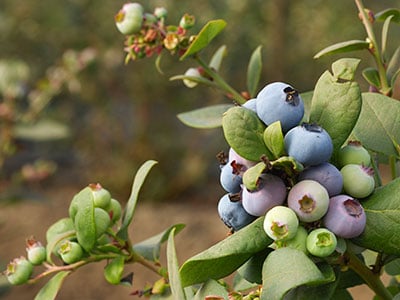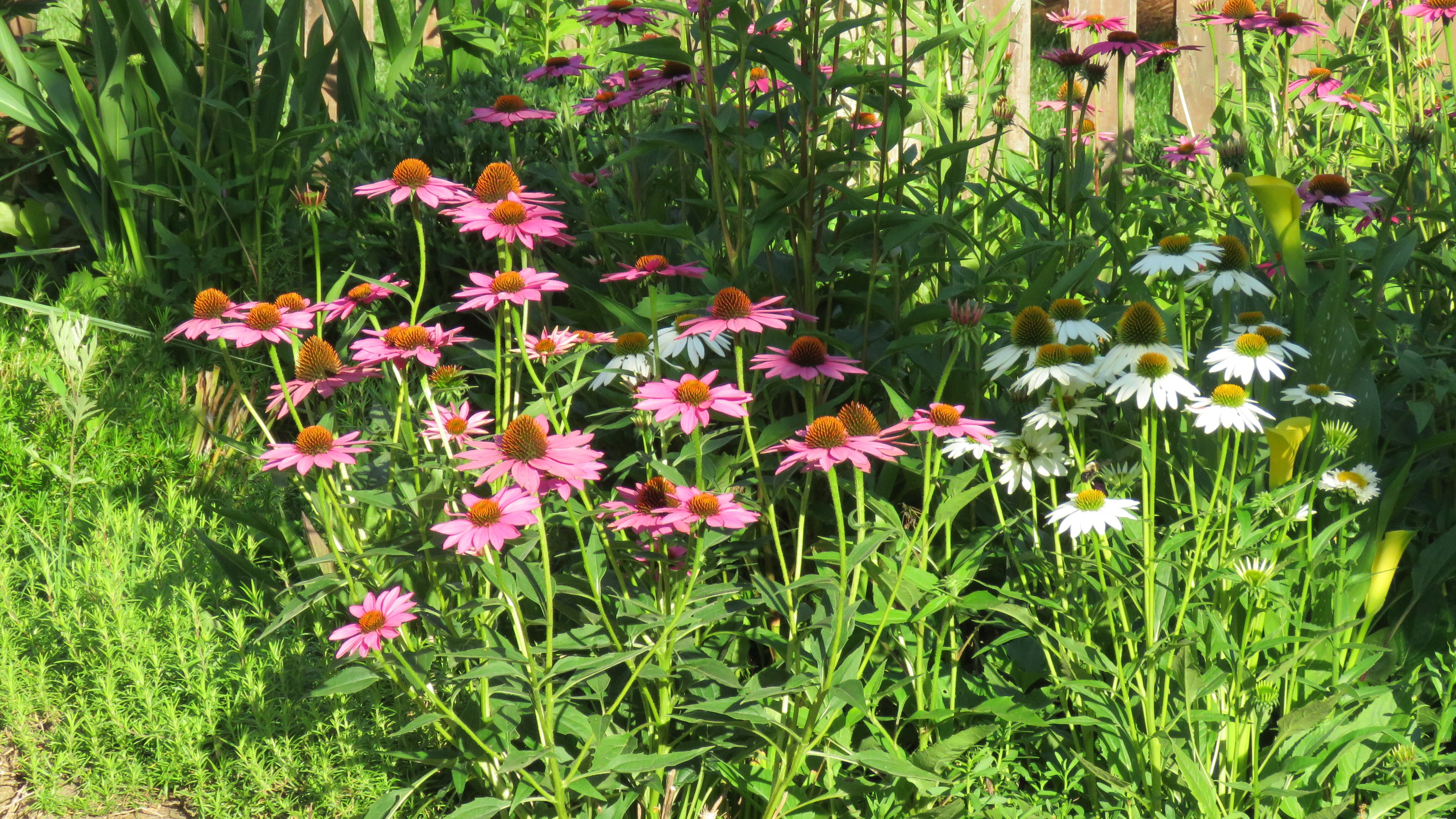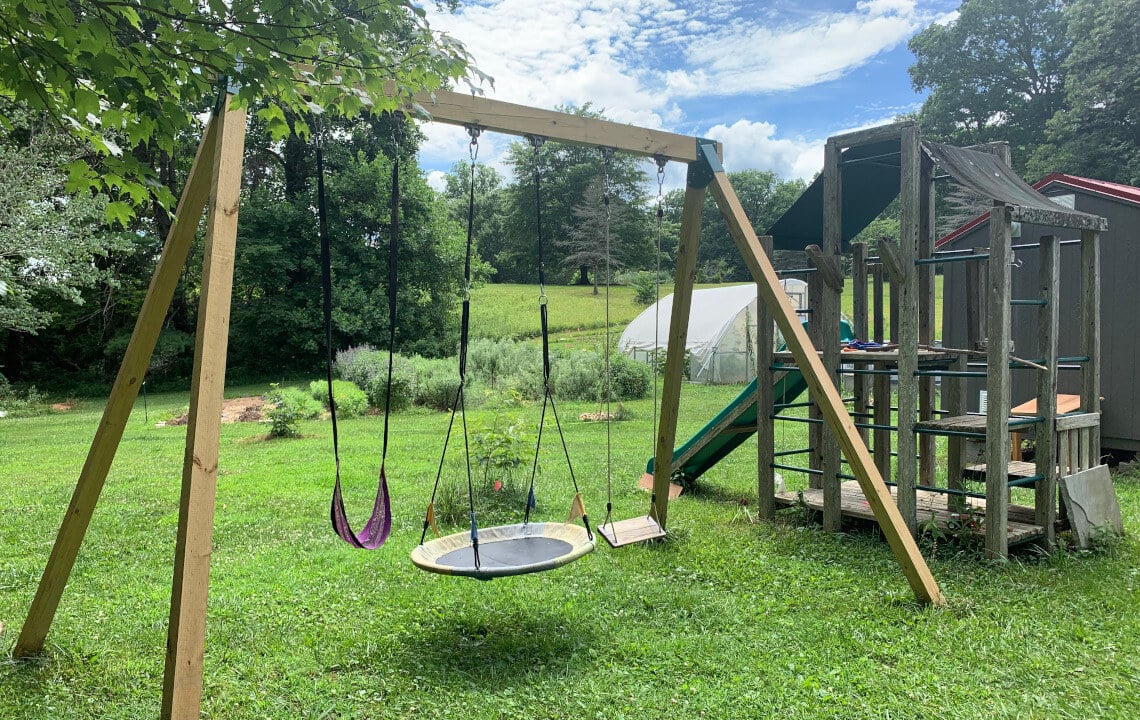Did you know Americans spend nearly 27 billion dollars on nutritional supplements annually, according to Consumer Reports?
That’s more than a chunk of change.
Though I confess I am a big believer in specific supplements, I’ve learned from years of experience and countless hours or research, the best way to get the bulk of our nutrition is from eating whole, fresh, naturally and organically grown, unprocessed, unadulterated, REAL foods.
Enter the now-infamous “phytonutrients.”
Though the word “phytonutrient” may sound like a magical cure-all pill you can only obtain from an ordained guru, these are simply the nutrients found in plants. Bite into an apple or cucumber and you’re eating phytonutrients.
However, when it comes to nutrition not all plant-based foods are created equal.
Some plants, known as superfoods, provide naturally high levels of nutrients far superior to most of the run-of-the-mill supplements out there.
Want to hear the really great news? Many of these plants are ridiculously easy and affordable to grow yourself…some can even be grown indoors with zero gardening experience.
Read on to learn how to save buku bucks on your supplement bill with these 9 superfoods anyone (green thumb or not) can grow at home:
1. Elderberries
The once humble elderberry has become the new “it” supplement in the children’s natural health aisle.
Elderberries are high in vitamins A, B, C, and naturally-occurring antioxidants. They are commonly used throughout Germany for colds and flu, and according to the University of Maryland, studies suggest the phytochemicals in elderberries and elderflowers may reduce nasal congestion and have anti-inflammatory, antioxidant, anti-viral, and anti-cancer properties.
For these reasons, I— and nearly every semi-health-minded mother I know—always keep a bottle of elderberry syrup on-hand for when illness hits home.
A personal testament to its effectiveness, the last two times my toddler has come down with a cold, I’ve given her elderberry syrup (along with fermented cod liver oil) and she was 100% better within a day.
Jaw-dropping health benefits aside, this immune-boosting berry is incredibly easy to grow yourself so long as you don’t live in a drought-prone environment. And, since elderberry syrups run $15 a bottle and up, it may be worth the effort to try growing it yourself.
Elderberries have a naturally bitter flavor that is part of their medicinal profile…but not so tasty when eaten alone. You can dry them, use them in jams mixed with other fruits, or boil them into your own money-saving and immune boosting syrup like this one from Wellnessmama.
Where can you buy elderberry shrubs? Amazon of course. Or ask at your local nursery.
For more info on their care, check out this helpful article by gardeningknowhow.com.
2. Kale
Unless you pay zero attention to health trends, you know kale has become the grand diva of super greens.
And it’s super EASY and low-maintenance to grow at home…even in a pot. Here’s how to do it:
Decide which type of kale you wish to grow and purchase the seeds. I’m partial to Laciento (AKA Toscano, AKA Dinosaur) kale because the leaves are tender for salads and blend well into smoothies. But choose which ever variety you like.
Pop the seeds into the ground or a pot. Water, add fish emulsion or an organic fertilizer every few weeks, and watch your plants flourish.
To harvest, just clip off what you need with scissors and the plant will continue to grow new leaves. It’s the supergreen that just keeps on giving.
Kale generally does better in the cooler months, but I have had it survive Georgia summers so long as I kept it watered.
Kale is an extraordinary source of hard-to-find vitamin K (a whopping 684% of your RDA according to selfnutritiondata), and an excellent source of Vitamins A and C. It also has beneficial amounts of manganese, iron, copper, magnesium, potassium, and calcium.
3. Arugula
Spicy, tender, versatile and oh-so-chic, arugula is a no-brainer addition to your vegetable garden.
One of the most nutrient-dense foods available, arugula is a great source of Vitamins K, A, C, folate, and calcium; and it’s naturally-bitter and spicy properties benefit your liver.
And arugula isn’t just for salads. It can be wilted into soups (this takes off its spicy edge), sautéed and added to omelets, blended into smoothies, wilted and mashed into potatoes, or combined with fresh basil for a zesty twist on classic pesto.
We have about 10 rows of arugula growing in our backyard and it’s been a pleasure, for a lazy gardener like myself, to grow and eat. Very low maintenance.
We sowed the seeds in mid-April and started harvesting about 3-4 weeks later. Arugula will benefit from a shade structure during the hot summer months.
Like kale, you can just clip what you need with scissors and it will re-generate itself.
4. Blueberries
 By now, you know about the amazing antioxidant, anti-aging, heart-healthy, diet-friendly benefits of blueberries.
By now, you know about the amazing antioxidant, anti-aging, heart-healthy, diet-friendly benefits of blueberries.
But buying pint after pint can get expensive (especially with sugar-deprived kids who show zero restraint when it comes to fruit), and conventional berries are often highly sprayed with toxic pesticides.
Hardly worth the price tag for a mouth full of chemicals.
Thankfully, blueberries thrive in Southern climates and require very little attention.
Give your crop a head start by purchasing a few large bushes (if you can find it, the rabbit eye variety produces really sweet berries). Plant them in acidic soil (It's already acidic if you have clay. If not, add peat moss or mulch with pine straw.). After planting, add mulch and cover with a net to deter their worst pest…birds.
You should get a nice harvest your first season, and after a year or two you’ll be enjoying multiple pints of home-grown organic blueberries.
If there is a late frost (which we’ve had here in Georgia the past two years) and your bushes have already flowered you will have to cover them with old sheets or plastic.
To get the most out of your blueberry patch, check out this article on “Fertilizing Blueberries” from Purdue University’s Horticulture Department.
5. Sprouts
Sprouts are little nutritional powerhouses that can be grown right in your kitchen.
The ultimate “living food,” sprouts harbor a wealth of nutrients including enzymes, vitamins, minerals, chlorophyll, antioxidants and fiber. They also have a welcomed alkalizing effect on the body.
Any seed, nut, grain, or legume can be sprouted. To keep it simple, start with a sprouting mix, or plain old alfalfa seeds (the folks at Sproutpeople.org offer a wonderful selection of seeds and sprouting accessories).
Growing sprouts couldn’t be easier. If you can remember to rinse and drain seeds in a jar 2-3 times a day for a week or two (and really, with today’s Smartphone reminder systems there are no excuses), you can grow your own sprouts.
You can purchase a sprouter or sprouting jar, or do it like my mom used to by using a mason jar with a clean piece of pantyhose or cheesecloth secured on top with a rubber band for draining the water.
See this instructional video for more info and start sprouting today.
6. Sweet Potatoes
Once reserved for thanksgiving dinners or tossed aside for their creamier white potato cousins, sweet potatoes have made a roaring comeback as the darling carbohydrate of dieters everywhere.
Popularized by low-carb and grain-free diets such as Paleo, sweet potatoes pack a wealth of nutrients such as vitamins A, C, potassium, and antioxidants.
I’m gazing out my window at a full row of young sweet potato plants right now. I have tried starting them in spring and summer (either time works) using either plants or slips from our local nursery.
I put them directly into the ground, water, and let them do their thing. The vines are a beautiful addition to the garden and you can grow them in pots too.
They are low-maintenance and offer a great yield after about 3-4 months.
When it comes time to enjoy your harvest, try eating them raw like carrot sticks; they’re delicious and the kids love them.
7. Echinacea/Purple Cone Flower
 Echinacea is one of the most well-known herbs in the United States. Touted for its immune boosting properties, it’s been proven to reduce your risk of catching a cold by half and shorten a cold’s duration by nearly a day and a half.
Echinacea is one of the most well-known herbs in the United States. Touted for its immune boosting properties, it’s been proven to reduce your risk of catching a cold by half and shorten a cold’s duration by nearly a day and a half.
Given its traditional and scientifically proven medicinal value, it makes sense to keep a bottle or two around for when the sniffles hit.
If herbalism and home remedies fascinate you, you may wish to try your hand at growing Echinacea yourself to make your own infusions. This hardy and easy-to-grow perennial will be as much of a hit in your garden (with its beautiful pinkish-purple blooms), as it will in your medicine cabinet.
The Echinacea purpurea, AKA purple cone flower, variety (available here at Johnny’s Seeds) is the easiest variety to grow and also the most common form used in popular herbal supplements.
Harvest once your plants flower and you’re done enjoying their beautiful blooms. You can use the flowering tops and the leaves (or dig up the roots if you’re feeling ambitious), dry them, store in an airtight container and enjoy as an immune-boosting tea any time you need it.
8. Figs
If you want fast-growing trees that offer beauty and delicious, nutrient-dense fruit—look no further than the fig tree.
Figs are one of the oldest cultivated crops and are easy to grow in areas with long, hot summers—like the Southern states.
Whenever I think of figs, I think back to a young couple hiking through the mountains in southern Spain-in the dead of summer-without quite enough water to sustain them until the next town.
Oops!
I’ll never forget my relief when we came upon a huge grove of wild fig trees. The figs were thoroughly thirst-quenching and gave us the energy and stamina we needed to trek through the heat to the next town.
Ever since then, fresh figs have been a staple in our garden.
These plump, seedy, and juicy fruits are an excellent source of vitamins (such as B6 and B5), minerals (such as potassium and calcium), fiber, and prebiotics. They also have an alkalizing effect on the body.
And it doesn’t stop with the fruit.
According to WebMD, the chemicals in fig leaves may help type 1 diabetics use insulin more efficiently.
Fig trees are widely available at local nurseries and even some big box stores. Plant a couple, you won’t regret it.
9. Microgreens
As the name suggests, these immature versions of their adult counterparts may appear small, but their nutrition packs a gigantic punch.
A study conducted by the University of Maryland’s College of Agriculture and Natural Resources in cahoots with the USDA showed 24 different types of microgreens had from 4 to 40 times the amount of nutrients compared to the same mature greens.
That’s right…I said up to 40 times the nutrients of greens like kale, arugula, spinach, basil, and cabbage.
And the second-best part (aside from the nutrients) is they’re easy and affordable to grow indoors or outdoors, and are ready to eat (or sell for a premium to local gourmet restaurants) within 1-2 weeks flat.
For a quick tutorial on growing your own microgreens, check out this article by Organic Gardening: “Grow Your Own Microgreens,” and check out Johnny’s Seeds for a nice selection of microgreen seeds and seed mixes.
Phytonutrients aren’t exclusive to a vitamin or pharmaceutical company—they are readily available to us in our own backyards and kitchens for a fraction of the price you’d spend at the health food store.
Whether you start out spouting alfalfa seeds in your kitchen, planting blueberry bushes with the kiddos, or going gang-busters and establishing all 9 of these superfoods in your garden—the nutritional benefits and satisfaction of taking your health into your own hands is its own reward.
Happy, healthy growing!
-Kristen
Are you dreaming of growing a superfood garden on your own country land? Raydient Places + Properties features rural land for sale throughout the South, in Florida, Georgia and Texas. Take a look at RaydientPlaces.com.
























